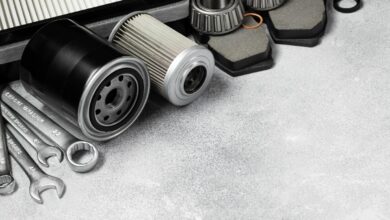700A Dual Component Thyristor Modules: Reducing Static and Heat Losses
Increasing operating power, decreasing electrical and thermal losses, and extending the service life of discrete semiconductors are currently a top concern for low-frequency power semiconductor thyristor diode modules. The requirement to continuously enhance the technical and economic characteristics of converting technology and the ever-increasing production, transmission, transformation, and energy consumption is largely to blame.
Nevertheless, conventional methods of increasing power thyristor and diode parameters in current integrated gate bipolar transistor (IGBT) modules aren’t always the best bet.
These methods rely on a lengthy and costly redesign process that involves switching to more cost-effective composite materials, cutting down on the number of structural elements, and even altering individual structural elements to lower mass production costs. The economic impact of the implemented improvements is nullified because these approaches increase the costs of developing the upgraded product to the range of 300,000 – 400,000 EUR and extend the term for releasing the product to the market to 2-3 years, which is often unacceptable for the customer.
On top of that, there are other dangers, such as end-user field trials lasting a lengthy time or problems with product certification. Here, optimizing the power semiconductor elements’ parameters and features is crucial while reworking other structural elements as little as possible. With the help of modern modeling tools, we can reduce upgrading iterations, development costs, and time to market for the upgraded product to a year or less.
Thyristor Switch Modules (TSM)
Connected in parallel with the load, thyristor diode modules are switching devices based on power electronics fitted in a TSC or a TSR. Standard components of a TSM include:
- A TCB controller board.
- A firing board.
- A thyristor module.
- A fan-equipped heatsink.
- A heatsink thermostat.
Based on their mechanical design, these modules can be built in one of two ways:
- Single thyristor switch modules: These are made to switch a single step.
- Dual thyristor switch modules: It allows for the independent control of two stages. Two similar switches share a single heatsink between them.
Regarding TSCs, thyristor diode modules can be utilized with either star or delta connections for single-phase or three-phase capacitor units wired internally in either star or delta configurations. Both single-phase and three-phase shunt reactors are compatible with TSMs in TSRs.
Among the most common characteristics of TSMs available now are:
- One TSM is needed to cover specifications in 3-wire systems up to 125 kvar or 380-690 V. The number of parallel TSMs that can be linked is unlimited, limited only by the controller’s capabilities.
- The whole reaction time is less than 20 milliseconds.
- The capacity to provide accurate and rapid capacitive or inductive reactive power.
- As a result of smart switching logic, reactors, capacitor units, and thyristors are subjected to less voltage stress and have a fast response time (one cycle) in all situations.
- Voltage, phase, and temperature monitoring were implemented.
- Easy to install, commission, and maintain due to its compact and modular architecture.
- Protects against overheating effectively.
- Durable construction that lasts for years.
Thermal and Static Parameter Reduction in a 60 mm Base plate-width Dual-component Module
The customer requested an improved dual-component A2-type power Thyristor module with a 60 mm base plate width, a voltage rating of 1800 V, and an average current rating of 540 A.
A clamping structure that provides electrical and thermal contact to the semiconductor devices offers an improved design with higher cycle resistance and surge current resistance.
The following solutions were obtained to accomplish the desired thermal and electrical losses of the module through the process of modeling the main electrical parameters and characteristics:
Raising the semiconductor element’s diameter and improving its topology to yield a 10% increase in active cathode area;
Bringing the initial silicon wafer’s specific electrical resistance down;
Following the production of a pilot batch, the primary findings of the modeling were validated by qualification tests:
Static losses
Both the threshold voltage (VT(TO)) and the dynamic resistance (RT) dropped by 5% and 10%, respectively.
Heat loss
Less heat loss occurred due to a 10% decrease in the junction-case thermal resistance (Rthjc).
The Surge Current in the Open State
Enhanced by 20% when the pn junction temperature reaches its maximum, Tjmax = 130°C.
Conclusion
The capacitor bank steps or shunt reactors are guaranteed one network cycle response time in all conditions by employing a Thyristor Diode Module, which smoothly switches currents. For electric power systems that need to compensate for transitory free reactive power, thyristor switching reactors, and capacitor banks are a good option because of this property.


